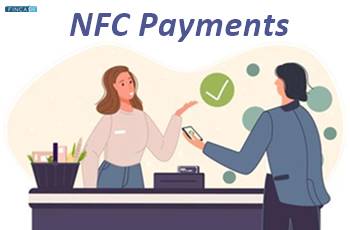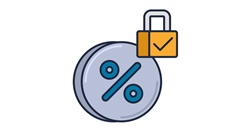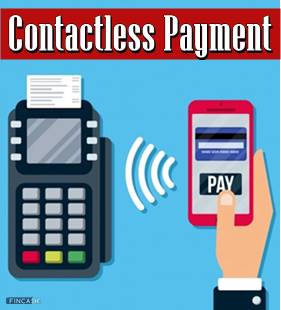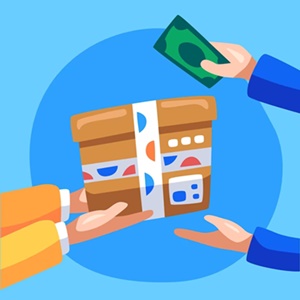
Table of Contents
NFC Payment
Near Field Communication (NFC) mobile payments are contactless digital payment solutions that enable phones, tablets, or credit cards to interact with readers that support NFC. ApplePay, GooglePay, and SamsungPay are examples of mobile payment systems that use it.

NFC technology enables businesses to collect payments from customers quickly and easily without personnel touching cards. They are highly encrypted, and a secure mode of payments used extensively. It can also make the checkout process quicker. It provides an excellent payment solution for various enterprises, including merchants, restaurants, and professional service providers.
Features of NFC Payment
Wireless technologies play a crucial role in bringing our vision of a digital world to life. The following are the primary features of digital adoption in the payments business:
Accessibility
It can be accessed from anywhere and can be used for different purposes, like paying at restaurants, shopping from a mall, purchasing medicines or groceries and so on.
Speed
NFC payments are one of the fastest modes of payment available globally. Thanks to the efficient synchronization capabilities and offline computing, transactions are now speedy without losing out on interoperability.
Convenience
Through scan and pay QR codes or contactless tap and pay feature, NFC payments are convenient in use. They are easy to use and can be understood by users quickly.
Secure
Multiple layers of safety norms are linked with contactless payments. Also, the technology is as safe as any of those of credit card processing. Moreover, any fraudsters cannot access it even if your mobile phone is stolen.
Talk to our investment specialist
Benefits of NFC Payment
The payments sector is no exception, swiftly adapting to changing customer behaviour. Here are some of the benefits jotted down for understanding the NFC payments better.
- You can use your smartphone or tablet to make fast payments via NFC. Contactless transactions can be done with only a few clicks using a mobile wallet, such as those offered by Google or Apple.
- It's also a very adaptable platform since it can be used for various services and industries. Some examples include mobile banking, restaurant bookings, train or movie ticket booking, sending real-time information on expenditure and many more.
- This technique is also advantageous to businesses as it demonstrates dynamic and forward-thinking business ethics. Customers are better served by using simple, hassle-free technology, boosting brand reputation and productivity.
- Not only are the transactions contactless, but they are also frequently done quickly, resulting in faster transaction times, quicker checkouts, and a better customer experience.
- The contactless card tap to pay system is safe, as each scan or tap only processes one payment at a time, avoiding any mishaps.
- It is much more convenient to use in a busy retail environment to avoid searching for change and cash.
- When you utilize the contactless payment option, certain banks provide you cashback, loyalty points or rewards that can be applied and used instantly.
NFC Payment App
NFC payments applications use NFC technology to communicate data between readers and payment devices such as GooglePay, PhonePe, Paytm, and other smartphone e-wallets. Payment can be made through varying methods, such as scanning the QR code, tapping to pay, and paying through mobile numbers or Bank details.
They are contactless, encrypted, and very secure; such payments are extensively utilized. It can also make the checkout process go more quickly.
How do NFC Payments Work?
An NFC reader is required for contactless payments. When a Point Of Sale (POS) system triggers this reader, it sends out a signal that uses radio transmission to look for an NFC-enabled payment device. The payment device sends the payment information to the reader when the latter identifies the device's antenna, be it a phone app or a credit card.
In other words, when the payment and reader devices are enabled and in proximity to each other, the NFC chips exchange encrypted data for completing the transaction. During the checkout procedure, a secure and straightforward flow is created.
What Do You Need?
To experience the contactless payment, here is the list of things you need:
- NFC enabled Android or iOS smartphone with 4.0 OS or above
- Existing Debit Card or credit card details
- NFC Payment apps like GPay, PhonePe, Paytm etc
Devices Supporting NFC Payment
An NFC reader is required for businesses that want to accept payments through this method. Businesses can allow consumers to pay for transactions using various devices if they have an NFC reader connected to their POS system.
Devices that support NFC payments are:
- Smartphones
- Smartwatches
- Tablets
- Laptops
- EMV-chipped credit or debit cards
How to Use GPay NFC Payment?
GPay customers must first register their NFC-enabled credit and debit cards as a payment option, in addition to their bank account.
Here is the step-by-step guide to using GPay NFC payments:
- Download and install the GooglePay app on your smartphone through Playstore or Appstore
- Select 'Settings' and then 'Payments methods' from the drop-down menu. Then choose 'Add Card' from the drop-down menu
- Tap 'Save' after entering your card information, such as the card number, expiration date, CVV, and the cardholder's name and billing address
- Google will Call your bank to confirm your credit card information.
- An extra authentication using One-Time Password (OTP) will be requested
- Then, hit 'Activate' next to your new card's payment method listing and enter your OTP
After successful verification, you are ready for online transactions. Just tap and pay at NFC based terminals or QR code-based payments.
Is NFC Mobile Payments Secure?
In general, NFC payments are regarded as a secure source of payment. The technology is just as safe as conventional credit card processing on mobile devices. They're dynamically encrypted, making them one of the safest payment methods.
Each NFC-enabled application has its own set of security needs. Payment account information and transactions, for example, must be highly secure, whereas retail offerings may require little to no security.
Credit and debit cards with NFC capabilities are safe to use. Personal information, including financial information such as an account number and expiration date, is saved in the secure element, a protected location of the NFC phone.
The Bottom Line
NFC Payments are the future of India's Digital Payment Systems, thanks to the advancement of mobile payment technologies. Despite this, Indians still use physical cash for low-value retail transactions.
With the adoption and acceptance of numerous NFC Payments Apps and technologies and the Government of India's Digital India programme, it is expected to be a different India in the next few years.
Frequently Asked Questions (FAQs)
1. How to accept NFC payments?
A: To accept NFC payments, you either need a chip reader or an application installed on your phone like Google Pay, PhonePe and so on.
2. Does your smartphone support NFC?
A: Smartphones using NFC technology are gradually becoming more prevalent. To check, follow these steps:
- On your mobile device, go to the Settings App.
- Type NFC or "Near Field Communication" into the search box
- If the app displays results, your smartphone is compatible with NFC technology
3. How do I activate the NFC option on my device?
A: If your device has NFC, you must first activate the chip. It can come inactive by Default, so double-check the settings to be sure. Follow the steps to start:
- Open the Settings app on your smartphone
- Select connected devices from the drop-down menu
- Then, select connection options
- The NFC option will be displayed
- Turn on the NFC option
4. How is EMV different from NFC?
A: EMV is a chip-enabled card-based payment system, whereas NFC is a payment processing system that enables contactless transactions.
5. Is it safe to use NFC apps?
A: Yes, NFC-enabled apps are safe to use. Financial information, such as an account number and expiration date, is saved in the "secure element," a protected location of the NFC phone.
6. What is the difference between NFC and radio frequency identification (RFID), and how are they related?
A: NFC and RFID are wireless technologies; however, NFC is utilized for secure applications such as payment, access, and ticketing and has a shorter Range. On the other hand, RFID has more extensive coverage, requires less security, and is used for fundamental applications like monitoring pallets or animals.
All efforts have been made to ensure the information provided here is accurate. However, no guarantees are made regarding correctness of data. Please verify with scheme information document before making any investment.












